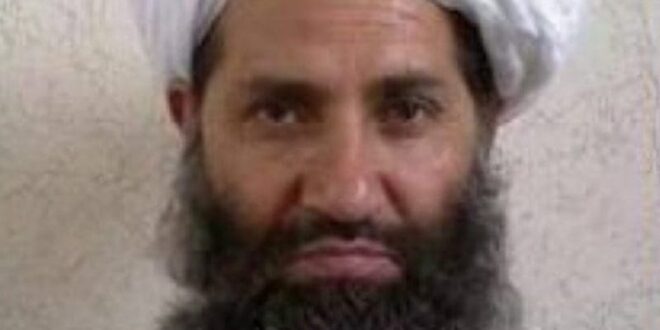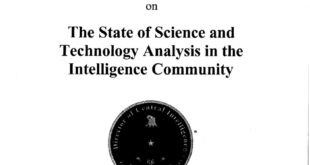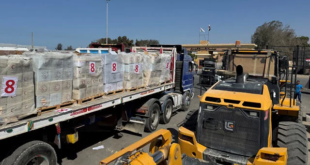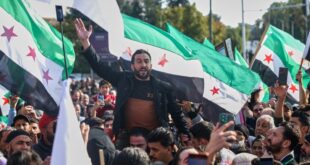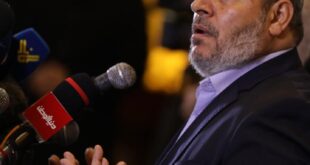The Taliban has for years presented a united front to the outside world and kept a tight lid on dissent within its ranks.
But unprecedented displays of discord have laid bare the rifts in the secretive militant group and exposed an intensifying power struggle.
The internal divisions could spill over into violence, experts warn, and trigger a new civil war that would further destabilize the volatile region.
“Despite a culture of secrecy and unity, recently there have been public shows of disunity,” said Michael Semple, a former EU and UN adviser to Afghanistan. “These suggest that the movement is under real strain.”
‘Chaotic And Uncertain’
In December, the Taliban’s Refugees Minister Khalil Haqqani was killed in a suicide bombing. He is the most senior official to be killed since the hard-line Islamist group seized power in 2021.
Privately, most of Haqqani’s supporters accused his rivals in the Taliban of ordering his assassination, according to experts.
In January, a senior Taliban official left the country soon after appearing to criticize the Taliban’s spiritual leader Mullah Haibatullah Akhundzada, who has the ultimate say under the group’s clerical-led system.
“Follow him, but not to the extent that, God forbid, you grant him the rank of prophethood or divinity,” said Mohammad Abbas Stanikzai, the Taliban’s deputy foreign minister, according to an audio recording released last month. “If you deviate even a step from God’s path, then you are no longer my leader, I do not recognize you.”
Stanikzai also criticized Akhundzada’s ban on girls’ education, which has provoked international condemnation.
He confirmed that he was in the United Arab Emirates, but said it was due to health reasons. Reports suggest Stanikzai fled Afghanistan after Akhundzada issued a warrant for his arrest and ordered a travel ban.
Meanwhile, a growing number of Taliban members have openly complained about delays to the payment of their salaries.
The Taliban has denied that there are any rifts in the group. Chief Taliban spokesman Zabihullah Mujahid told the private Tolo News that the group “will never engage in disagreements, become a source of division, or take actions that could lead to misfortune or bring instability back to the country.”
But several sources in the Taliban, who spoke to RFE/RL on condition of anonymity because they were not authorized to speak to the media, described the current atmosphere as “chaotic” and “uncertain.”
The sources also said that officials were banned from leaving the country unless they received authorization from Akhundzada
“These developments suggest a real challenge to the movement’s unity, between those Taliban who feel marginalized and those who feel empowered,” said Semple, a professor at Queen’s University Belfast.
“We are now in new territory. The political and military opposition to the Taliban is weaker than in the 1990s,” added Semple, referring to the Taliban first stint in power. “But the expectations of the Afghan population are much higher and the levels of popular frustration with Taliban performance are unprecedented. Unhappy Taliban know this.”
Internal Competition
The internal rifts in the Taliban have increasingly come to the fore since the group regained power in 2021.
Akhundzada, who rarely leaves his stronghold in the southern city of Kandahar, has monopolized power, marginalized more moderate figures, and enforced hard-line policies that have made Afghanistan an international pariah.
Among Akhundzada’s rivals is Sirajuddin Haqqani, the Taliban’s defense minister and leader of the Haqqani network, a powerful faction that wields significant influence in eastern Afghanistan.
Others include Mullah Mohammad Yaqub, the interior minister and son of the group’s founder, Mullah Mohammad Omar, as well as Mullah Abdul Ghani Baradar, who headed the group’s political office in Qatar and is the deputy prime minister in the Taliban cabinet.
“Recent events, particularly tensions between different factions within the Taliban, are a significant challenge to their unity, but they are not the only or necessarily the biggest threat,” said Hatef Mukhtar, director of the Afghanistan Center for Strategic Studies.
There are splits in the Taliban along ideological lines. Some Taliban leaders want international recognition and economic investment, while others prioritize enforcing strict Islamic rule, even at the cost of isolation, said Mukhtar.
The growing influence of the Kandahar-based leadership at the expense of former battlefield commanders and the political office is also a source of tension, Mukhtar said.
Meanwhile, the Islamic State-Khorasan (IS-K) extremist group continues to pose a threat to the Taliban, testing the group’s ability to maintain security.
Underscoring that threat, IS-K claimed responsibility for a suicide bombing outside a bank in northern Afghanistan on February 11 that killed five people, the Taliban said. But two Taliban sources, who spoke on condition of anonymity because they were not authorized to talk to the media, said at least 14 were killed in the attack, including members of the group.
The Taliban’s cash-strapped and unrecognized government has also come under increasing financial pressure.
U.S. President Donald Trump has frozen all foreign aid, including to Afghanistan. That is likely to aggravate the devastating humanitarian crisis in the country. Meanwhile, the value of the national currency, the afghani, has plummeted in recent weeks, triggering price hikes.
Experts say that while the Taliban has shown resilience in managing internal disputes, escalating tensions could threaten the group’s cohesion.
The most likely scenario is “low-level infighting, assassinations, and internal purges rather than an open military confrontation,” said Mukhtar.
“But if the Taliban fails to address its internal divisions, Afghanistan could eventually see another cycle of intra-Islamist conflict,” he added.
 Eurasia Press & News
Eurasia Press & News
